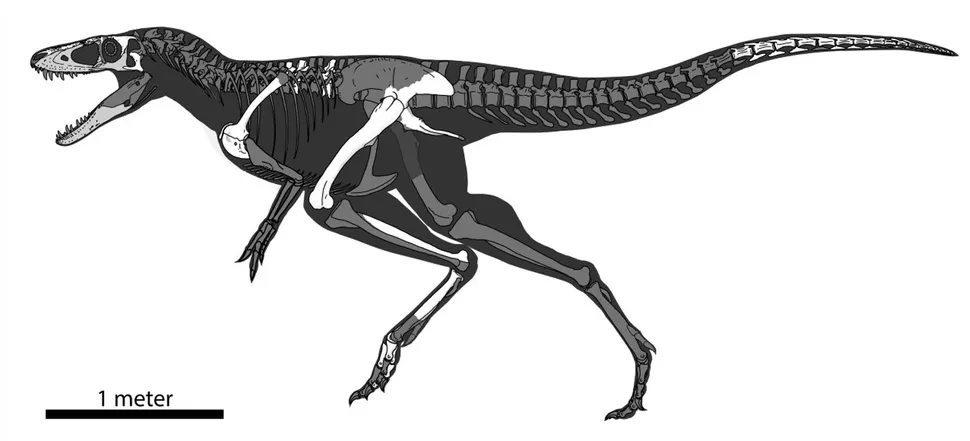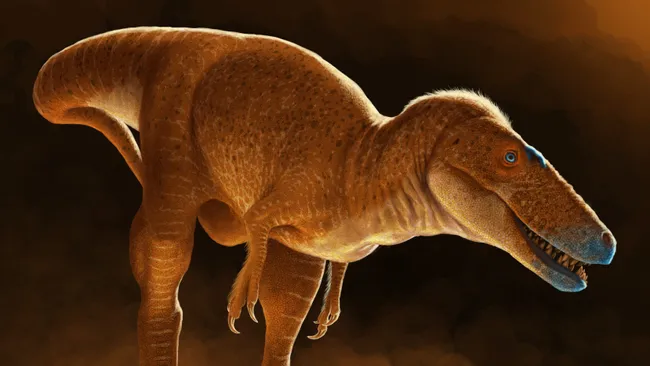A new species of dinosaur that was probably a princely ancestor of T. rex, the king of the dinosaurs, has been identified from fossils excavated in Mongolia.
Meet the “Dragon Prince”: Newly Discovered Dinosaur Sheds Light on T. rex Evolution
A prehistoric predator with royal ties is rewriting what scientists know about the evolution of the most iconic dinosaur of all time — Tyrannosaurus rex. Recently, paleontologists unveiled a newly discovered species named Khankhuuluu mongoliensis, or the “dragon prince of Mongolia”, which represents a crucial evolutionary stepping stone on the path to tyrannosaur dominance.
The name Khankhuuluu mongoliensis comes from Latinized Mongolian, meaning “prince dragon,” a poetic nod to this dinosaur’s place in the ancient lineage that would eventually produce the kings of the Cretaceous. The discovery, published June 11 in Nature, is based on fossils found in Mongolia during expeditions in the 1970s — fossils that have been hiding in plain sight for decades.
From Museum Drawers to the World Stage

Study co-author Jared Voris, a paleontologist at the University of Calgary, revisited the partial skeletons long thought to belong to a known species, Alectrosaurus. But upon closer inspection, he realized they belonged to something entirely different — and far more significant.
“I realized it was something completely different than anything we’d ever seen,” said Voris. “It actually represented the ancestor of all of our big apex predatory tyrannosaurs that we find both here in Alberta and in Mongolia and China.”
The fossils had languished in storage since their discovery in 1972 and 1973. Now, thanks to modern analysis, they’re recognized as evidence of a new species that lived 86 million years ago, about 20 million years before T. rex ruled the Late Cretaceous.
Small Body, Big Implications
Unlike its massive descendants, the dragon prince wasn’t a giant. It measured about 13 feet (4 meters) long and weighed around 1,650 pounds (750 kg) — a lightweight compared to T. rex, which could top 40 feet and 10 tons. It also had a smaller head and longer arms, features that reflect its transitional place in tyrannosaur evolution.
According to co-author Darla Zelenitsky, K. mongoliensis likely hunted smaller prey, not the giant sauropods its successors would eventually challenge. “It was probably taking down prey smaller than itself,” she said.
The fossil evidence suggests that the specimens are adults, not juveniles, based on signs like fused vertebrae, small horns, and textured nasal bones. But researchers caution that bone cross-section analysis — which could confirm their maturity by counting growth rings — hasn’t been allowed yet due to the rare and valuable nature of the fossils.
A Family History Written in Stone — and Migration
To better understand K. mongoliensis’s place in the tyrannosaur family tree, researchers compared 12 tyrannosaur species, tracking how they spread and evolved across time and continents.
The team found that around 85 million years ago, K. mongoliensis or a close relative migrated from Asia into North America via a land bridge where the Bering Strait lies today. This migration likely sparked the rise of North America’s true tyrannosaurs.
Then, around 78 million years ago, another migration sent tyrannosaurs back into Asia, seeding two lineages: one massive and fearsome like Tarbosaurus bataar, and another smaller and more delicate, like Qianzhousaurus sinensis — often nicknamed “Pinocchio rex” for its long snout and daintier build.
Finally, about 68 million years ago, a third migration brought one of Asia’s massive tyrannosaurs back to North America, likely giving rise to T. rex itself.
“They show that a few big migration events back and forth between Asia and North America were the drivers of much of tyrannosaur evolution,” said Steve Brusatte, a paleontologist at the University of Edinburgh. “The tyrannosaur family tree was shaped by migration, just like so many of our human families.”
Rewriting the Rise of Tyrants
The “dragon prince” discovery fills in a major gap in our understanding of how tyrannosaurs rose to dominate their ecosystems. With its mix of primitive and advanced features, Khankhuuluu mongoliensis helps clarify the evolutionary path from small, agile hunters to massive apex predators.
“This is a really nice new discovery,” said Thomas Holtz, a paleontologist at the University of Maryland. “It gives us a better sense of what this intermediate phase of tyrannosaur history is like.”
For now, K. mongoliensis may be known as a “prince,” but it marks a pivotal moment in the tale of how dinosaurs rose to royalty.
